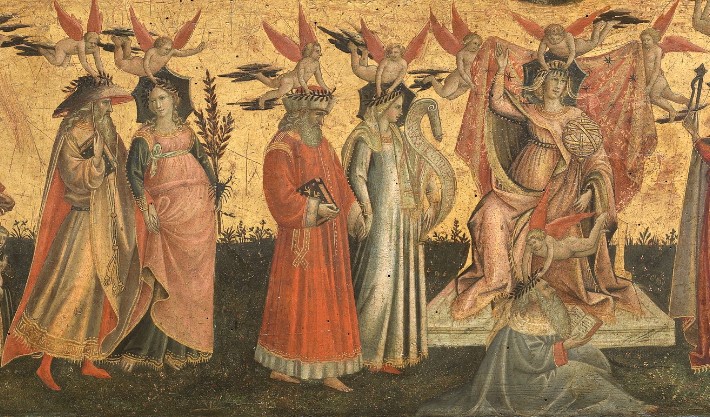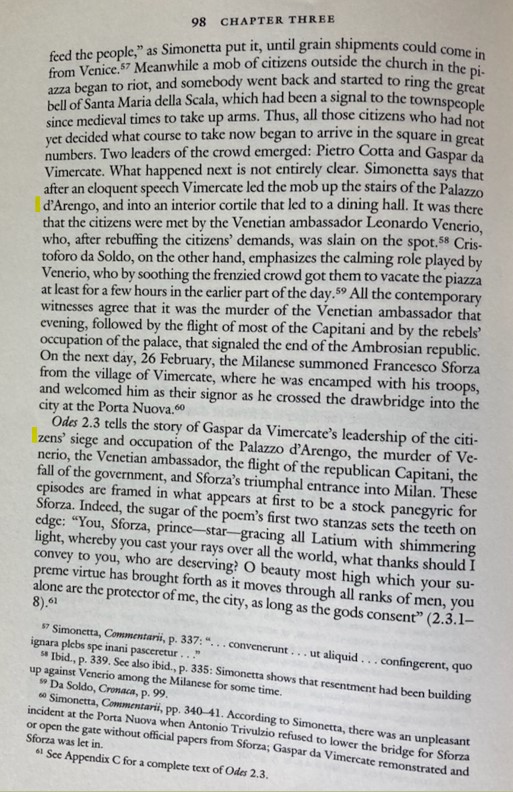Ross Caldwell wrote: 07 Jul 2023, 17:22
Phaeded wrote: 07 Jul 2023, 17:05
See what I added above - now leaning towards pseudo-Kufic. Also look at some of the other robe hems - signs of ps-Kufic:
!!!!Dal Ponte detail - hem script.jpg
Could be, but on Alexander? If it is Alexander, that is. But yes, any Exotic East© figure might bear these cryptic characters, and who could say the artist was wrong? It is MEANT to evoke the mysterious.
Definitely only pertaining to the scroll in Alexander's hand (not a hem), which would point to some "oriental wisdom" he obtained if Kufic. Besides the underwater journey, the flying griffins cart, etc., one of the legends that remained strong amongst the Arabs was about holding back the hordes of Gog and Magog via a wall he built in the East (a myth which may have received new life with the advent of the Mongols). Perhaps that? That would be quite esoteric, but maybe less so given the Mongols incursions all the way into the Holy land:
Whatever the truth may have been, the Mongol advance led to wild rumours in Europe at the time, that perhaps the Mongols had captured Jerusalem and were going to return it to the Europeans. These rumours, starting around March 1300, were probably based on accounts from Venetian merchants who had just arrived from Cyprus.[46] The account gave a more or less accurate picture of the Mongol successes in Syria but then expanded to say that the Mongols had "probably" taken the Holy Land by that point.
https://en.wikipedia.org/wiki/Mongol_ra ... _Palestine .
Perhaps its just to indicate Alexander was most learned than of all of the other exempli due to Aristotle, and the tiny scroll just needed "writing" on it.
The presumed companion piece of the seven liberal arts in the Prado -
https://www.museodelprado.es/en/the-col ... 901222eb76 - does have Aristotle: "Then comes Dialectics, who carries an olive branch as a symbol of agreement among the Arts, and a scorpion, whose pincers represent the opposing positions of dialectical thought. He is accompanied by Aristotle." If the Alexander figure does hold a scroll it would be in connection with that, I would assume. Also note the Ptolemy figure in the middle has a book open and the writing here is also gibberish, but more like dots and lines to connote an actual treatise, while the "Alexander scroll" does look like more of a titulus. Vexing....

Finally occurred to me (doh!) that the only other scroll is being held up by the leading art: "To the left of Astronomy, Rhetoric carries a scroll and is accompanied by Cicero (first century B.C.), who carries one of his texts." It too appears to be gibberish, although the zoom function is more limited here. If even Cicero's text is illegible than the significance of Alexander's scroll - not even a writer - reduces us to this just being a symbol of writing, likely Aristotle's (who follo's Cicero), and symbolically the two scrolls, one on either cassone, allow for the representation of that which was most dear to the humanists: Latin (Cicero) and Greek (Aristotle); neither, ironically, writ legibly.
 !!!dal ponte scroll.jpg
Viewed 1183 times 96.57 KiB
!!!dal ponte scroll.jpg
Viewed 1183 times 96.57 KiB
 Robin, Diana. Filelfo in Milan: Writings 1451-1477. United States: Princeton University Press, 2014: 98
Robin, Diana. Filelfo in Milan: Writings 1451-1477. United States: Princeton University Press, 2014: 98

